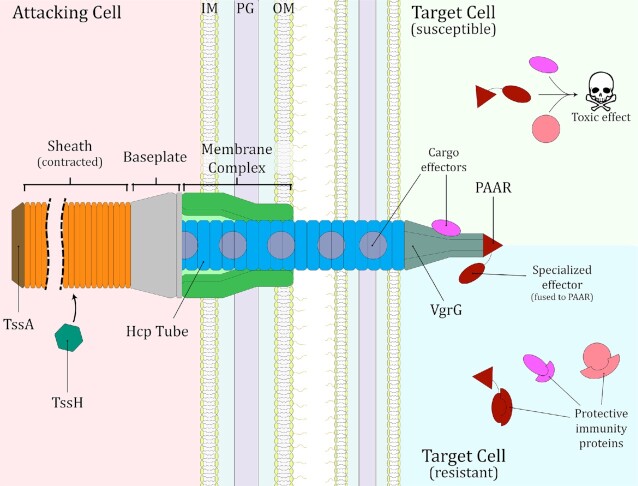Figure 1.
Structure of the Type VI secretion system (T6SS). The system is represented in its contracted state, after a “firing” event. The cytoplasmic baseplate, housing the VgrG-PAAR spike, docks on the membrane complex and acts as a platform for the assembly of the Hcp tube surrounded by the extended contractile sheath. TssA coordinates assembly and extension of the Hcp tube and sheath. During the firing event, contraction of the sheath propels the Hcp-VgrG-PAAR puncturing structure through the membrane complex, out of the attacking cell and into a neighbouring target cell. After contraction, TssH depolymerizes the sheath, facilitating a new round of T6SS assembly and firing. T6SS effectors (cargo and specialized) decorate the puncturing structure and are released into the target cell. Susceptible target cells suffer the noxious actions of the delivered T6SS effectors, while resistant target cells (e.g. sibling cells) possess cognate immunity proteins that bind to the incoming effectors to neutralise them. Note that a Gram-negative bacterium is depicted for the example of a susceptible cell, but the same general mechanism would apply for susceptible eukaryotic cells. IM, inner membrane; PG, peptidoglycan cell wall; OM, outer membrane.

